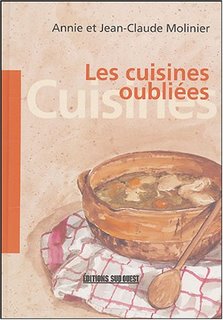I’m having a bit of a Malaysian food binge at the moment, and the beef curry puff is about as Malaysian as you can get. These little pasties are made from a mouth-meltingly short, flaky pastry, and are filled with a rich beef, onion and potato curry.
There are as many variations on the curry puff as there are cooks. Some prefer a shortcrust pastry, some like a chicken or vegetable filling – I’ve also seen sardine in Malaysia. Some are so fiercely spiced you need to cool your tongue between bites, some so subtle that they come across…well…a bit Cornish pasty. This recipe is just gorgeous – serve some curry puffs next time you have some friends round and just watch how fast they vanish. Try to use beef dripping to fry the filling if you can find it; it gives the curry puffs a delicious beefy depth. (Use vegetable oil if you can’t find any.)
To make about 30 you’ll need:
Filling
Beef dripping to fry
12 oz onions, diced
12 oz waxy potato, cut into 1cm cubes
1 teaspoon ginger, diced very fine
5 cloves garlic, diced very fine
8 shallots, sliced thinly
1 lb minced beef
4 tablespoons Madras curry powder
1 can coconut milk
Juice of 1 lemon
2 tablespoons caster sugar
3 teaspoons salt
Pastry
1 lb flour
4 oz butter
8 oz lard
1 egg, and another to glaze
2 tablespoons sugar
Juice of ½ a lemon
6 fl oz water
Start by cooking the filling. Stir fry the onions in a tablespoon of beef dripping until they are soft and translucent. Remove them to a bowl and set aside. Add another tablespoon of dripping to the pan and fry the potato cubes in the same wok with a pinch of salt until they begin to take on a little colour, then pour over 4 fl oz of water and put the lid on, reducing the heat to a simmer. Cook for between five and ten minutes, until the potatoes are cooked through. Put them in the bowl with the onions.
In the same wok, stir fry the ginger, garlic and shallots in a little more dripping. When the spices are giving off their scent, add the beef and stir-fry for five minutes until well mixed. Add the curry powder and continue to stir-fry until all the beef is coloured. Add the onion and potato, stir thoroughly, then add the coconut milk, sugar, salt and lemon juice.
Reduce the heat to a low simmer, and reduce the mixture until it’s thick and glistening. Taste, adding more lemon juice and salt if you think it needs it. Cool and refrigerate. (This is important – you’ll find the puffs much easier to fill if the curry is cold. A warm filling will be slightly runny.)
You can make the pastry and fill the puffs on the same day you prepare the filling, but the filling is one of these things that really improves by being kept in the fridge for a day – the flavours deepen and meld.
To make the pastry, mix the egg, sugar, salt, water and lemon in a measuring jug and refrigerate until it’s nice and cold. Sieve the flour into a bowl, and rub in the butter until the mixture looks like breadcrumbs. Cut the lard into little cubes (about the same size as you cut the potato) and blend it well with the flour/butter mixture. Add the contents of the measuring jug and bring everything together gently with your hands. Rest the pastry in the fridge, wrapped in clingfilm, for an hour.
Slice the pastry in two and roll out half into a thin rectangle. Fold the rectangle into three (as if you were folding an A4 sheet to fit in an envelope) and roll it out again. Repeat the folding and rolling four times. Cut out rounds about ½ cm thick with a large fluted pastry cutter and repeat the process with the other piece of pastry. (If you’ve scraps left over, just roll them out and use the cutter on them.)
Beat an egg and put it in a cup where you can reach it easily as you work.
Put a tablespoon of filling in the middle of each pastry circle, and wipe some beaten egg around half the edge. Press each edge together to seal and crimp the curry puff. Arrange the puffs on a baking tray and brush each with the beaten egg to glaze.
Bake at 230° C for the first 10 minutes, then reduce the heat to 200° for 20 minutes. Cool (if you can bear to – ours usually go straight from the oven into slobbering mouths) on a cake rack.




